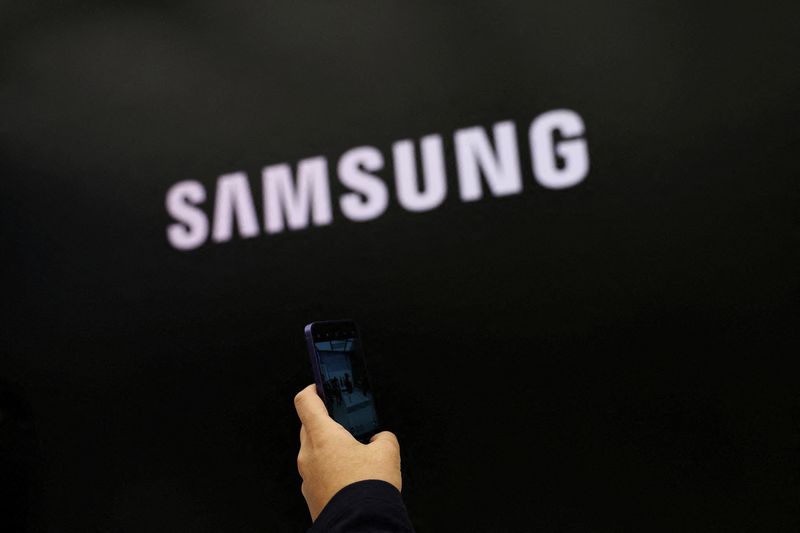By Joyce Lee and Heekyong Yang
SEOUL (Reuters) – Samsung Electronics on Friday estimated a more than 15-fold increase in second-quarter operating profit, as recovering semiconductor prices driven by the rise of artificial intelligence lifted profits from lows a year ago.
The world’s largest maker of memory chips, smartphones and TVs estimated operating profit rose to 10.4 trillion won ($7.54 billion) in the quarter ended June 30, from 670 billion won a year earlier.
The profit surpassed the 8.8 trillion won estimated by LSEG SmartEstimate, which is based on analysts’ forecasts that are always more accurate. The quarter was also the most profitable since the third quarter of 2022.
In addition to higher chip prices, the better-than-expected profit was likely also due to Samsung (KS:) reversing earlier inventory write-downs as the value of its chip inventory has recovered in accounting terms, analysts said.
Samsung said revenue in the second quarter likely rose 23% from the same period a year earlier to 74 trillion won.
Shares of Samsung rose 1.2% after the forecast, compared with a 0.4% rise in the broader market.
The company is expected to report detailed second-quarter earnings on July 31.
AI QUESTION
Samsung’s main semiconductor division is likely to have posted a second straight quarter of profit, an improvement from the first quarter, as memory chip prices continue to rise from a low in mid-2022 to late 2023, which was caused by weak demand for gadgets using the chips following the pandemic.
Analysts say explosive demand for advanced DRAM chips, such as High Bandwidth Memory (HBM) chips used in AI chipsets, as well as chips used in data center servers and gadgets running AI services, have contributed to rising chip prices.
According to data provider TrendForce, memory chip prices rose about 13% to 18% in the second quarter from the previous quarter for DRAM chips used in technical devices and 15% to 20% for NAND Flash chips used for data storage.
The rise in memory chip prices may slow in the third quarter. TrendForce predicts a 5% to 10% price increase for both conventional DRAM and NAND Flash chips, as demand for older chips from the consumer electronics market remains low.
“During the earnings presentation at the end of the month, we will be interested in Samsung’s outlook for older chips. That is a sign that the recovery of the chip industry could last into next year,” said Ko Yeongmin, an analyst at Daol Investment & Securities.
Analysts say demand for advanced chips like HBM and AI-powered solid-state drives (SSDs) will outpace the rest of the market. However, Samsung lags behind South Korean rival SK Hynix when it comes to supplying advanced HBM chips to customers like Nvidia (NASDAQ: ).
U.S. memory chip rival Micron Technology (NASDAQ: ) beat expectations for its latest quarterly revenue last week, driven by rising demand from the AI industry. However, its guidance for the current quarter fell short, while investors were still more optimistic.
Investors are awaiting news on whether Samsung’s latest fourth-generation HBM chips will receive approval to supply Nvidia, after failing earlier tests due to heat and power consumption issues, sources said.
Samsung replaced the head of its semiconductor division in May in a bid to overcome a “chip crisis.”

Samsung shares rose 8% year-on-year through Thursday, compared with a 63% rise for SK Hynix shares.
($1 = 1,379.8700 won)
